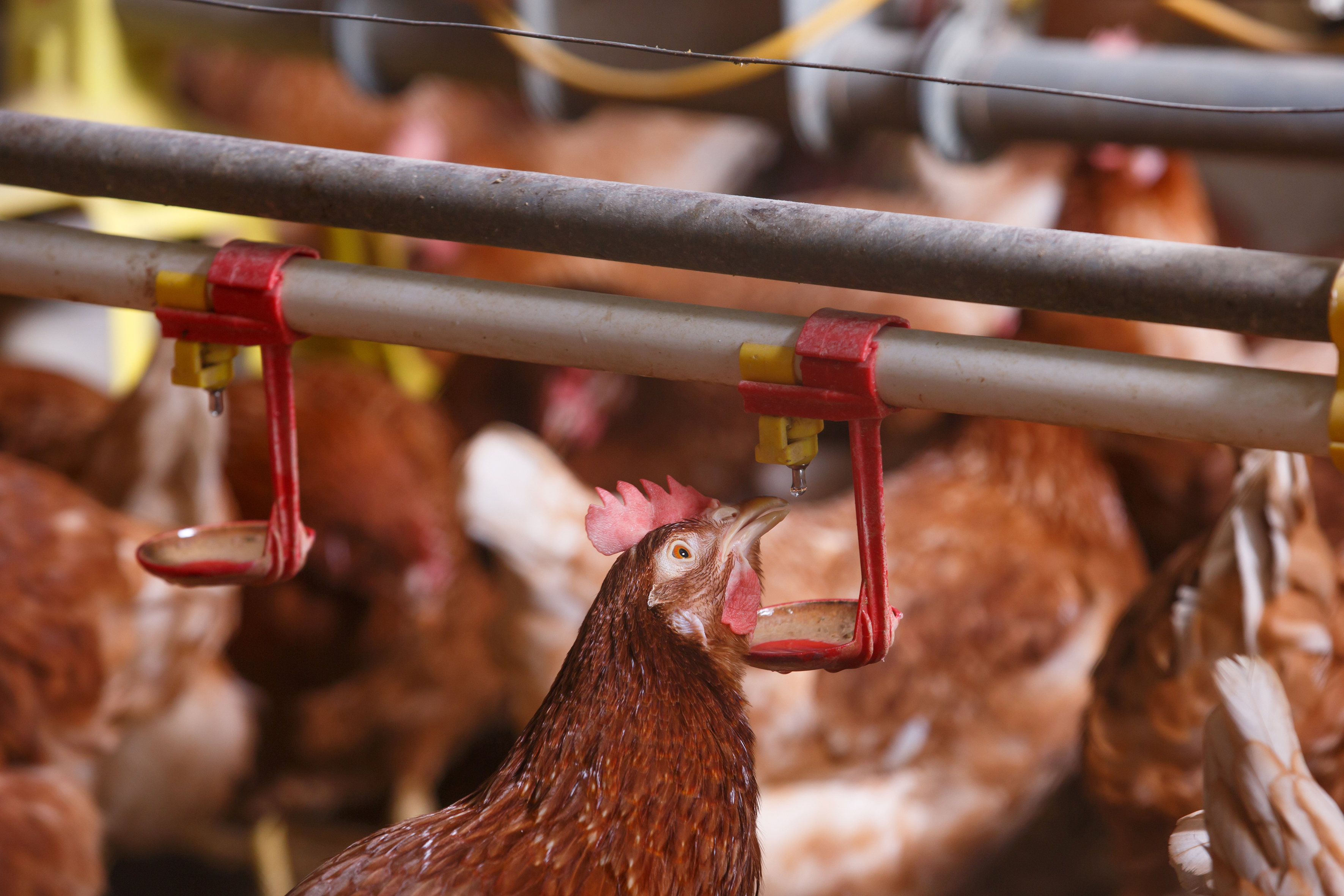What is The Impact of Red Mite On Your Chickens?
Red mite is a concern to producers because an infestation will cause discomfort and stress to the birds, which impacts how efficiently they convert feed to eggs. As well as a drop in production producers are likely to see an increase in seconds and higher bird mortality. The mortality issue can have a real impact on the profitability of a flock, especially if the growth in red mite numbers occurs early in the laying cycle.
Prevention
As with many aspects of optimising flock performance, preventing red mite from having an impact is always preferable to treating an infestation.
Any detergent will kill red mite, although it is important to use products at the right concentration, so be sure to check the label. A thorough approach to clean-out and disinfection will lower red mite numbers, but it is important to be realistic and assume there will always be some left, as they are capable of hiding in the tiniest nooks and crannies.
In older sheds there are often more places for red mite to hide, such as where plastic slats link together. However even with the newest shed designs and systems, there are numerous hiding places, such as the joins in feed tracks.
Following disinfection treat with a pre-housing powder treatment which can be applied to every surface in the shed. A powder treatment acts as a physical barrier to red mite emerging from their hiding places and can keep mite numbers low for about 40 weeks.
Simple things can prevent introduction of mite to a shed, such as making sure anybody coming to see the birds changes their clothes, especially if they have visited another farm on the same day.
Early Control
Once the birds are in, I suggest either a water-based or spray treatment to keep control of mite numbers.
Herbal treatments in water make the hens’ blood unpalatable to mites, which stops them from feeding. Residual insecticide sprays kill mites. They need to be Lion code and Freedom Foods approved and are best sprayed at night when the mites can be seen.
Treat the entire shed in one go, then follow up a few days later. Often, people treat a section of the shed one day and the next section a few days later. This is not an effective approach, as the mite populations can rebound very quickly.


Monitoring For Mites
As shed temperatures near 20-25°C, the optimal temperature for red mite larvae to thrive and red mite themselves to lay a high number of eggs. Blood spots on eggs will indicate a red mite problem, but it is better to spot earlier than this by checking sheds for signs of mites.
An effective way of doing this is to take a torch and check at night, when red mite come out to feed on the birds. Alternatively, it is possible to set traps and monitor these to spot mite early and act before the population get out of control, especially in warmer weather.
Treating Infestations
A medicated solution to add to drinking water to kill the red mite is the most effective at rapidly bringing down mite numbers within the shed and is less labour intensive than alternatives. However, this is a significant investment, so for flocks which only have a couple of months laying to go, insecticide sprays are usually more appropriate.
As a Poultry Specialist at Wynnstay, my job is to make sure that my customers’ birds get the most out of their feed, to maximise production throughout each laying cycle. This is achieved by focusing on all aspect of bird health and welfare, and in summer especially, red mite control is a must.












